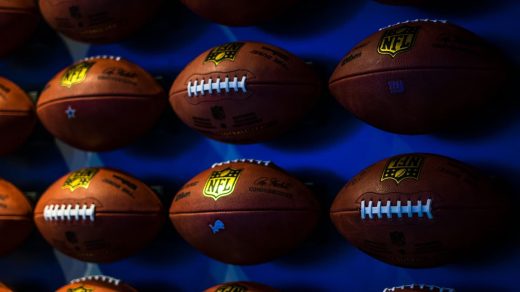The NFL has come a long way since its founding in the 1920s. It has attracted legions of fans and grown into a huge business worth billions of dollars.
Over the decades, new technologies, modern strategies, and the evolution of fan expectations have shaped what we now accept as the modern game of football.
For football fans, lovers of history, or anyone who enjoys the game, learning about how the NFL has evolved can make watching every Sunday even more exciting.
The Evolution of the NFL

This post examines how the rules, strategies, and fan experience have changed and the NFL’s impact on culture and sports betting.
The Origins of the NFL
The NFL began in 1920 as the American Professional Football Association (APFA). The league was loosely organized at its inception, with just 14 teams.
Player salaries were modest, games typically ended in low scores, and passing was rare. Running dominated the playbooks, and defenses reigned supreme.
By 1922, the APFA rebranded to the National Football League, laying the groundwork for what would become America’s favorite sport.
The NFL grew in popularity during the mid-20th century, bolstered by stars like Johnny Unitas and Jim Brown, and a newfound emphasis on passing.
Key Rule Changes
Each era of the NFL introduced rules that adapted the sport to fit modern needs. These changes played a pivotal role in reshaping how the game was played and perceived:
- The Forward Pass – While passing existed early on, it was officially legalized in 1933. Over time, passing strategies became more sophisticated, leading to the rise of legendary quarterbacks such as Joe Montana, Peyton Manning, and Tom Brady. The forward pass transitioned the league’s focus from gritty ground attacks to high-scoring aerial plays.
- The Super Bowl Era – The NFL’s merger with the AFL in 1970 was a pivotal moment that gave birth to the Super Bowl, ushering in an era of expanded visibility, increased competition, and higher stakes. This merger not only united the two leagues but also transformed the landscape of professional football. Iconic moments, such as the Steelers’ dominance and the Cowboys’ rise, have solidified this era as legendary, showcasing how the game evolved through fierce rivalries and innovative strategies.
- Player Safety Focus – In recent years, the NFL has implemented stricter enforcement of helmet-to-helmet hits and enhanced concussion protocols to prioritize player safety. These changes reflect a growing understanding of the causes of traumatic brain injuries, such as chronic traumatic encephalopathy (CTE). By addressing these issues, the league aims to protect its players and promote a safer playing environment.
- Two-Point Conversions and Overtime – Attempts to make the gameplay more exciting led to rule adaptations like introducing the two-point conversion in 1994 and new overtime rules—all of which have adjusted scoring strategies.
Technology in the NFL
Technological advancements have left a significant mark on how the NFL operates.
Instant replay has transformed how game officials review controversial plays, ensuring accuracy in high-stakes moments.
More recently, the adoption of digital tablets on the sidelines allows players and coaches to analyze real-time footage.
For fans, tech innovations like 4K broadcasts, fantasy football applications, and in-game mobile engagement have enhanced overall viewership.
The rise of sports betting platforms, showcasing the NFL’s latest lines, makes every play even more meaningful for wagerers.
Does overtime count for all NFL betting markets? Yes, unless otherwise stated, overtime counts for all NFL lines.
Platforms and experts always advise bettors to factor overtime into their strategies when studying moneylines or betting spreads to win big.
The Impact of Analytics
Another significant development is how teams have embraced analytics over traditional tactics.
Data analytics drive decisions during games, such as when to “go for it” on fourth down or efficiently manage the game clock.
Meanwhile, fans use betting dashboards to analyze trends, monitor NFL latest lines, and determine the best scenarios for placing bets on teams, touchdowns, or player statistics.
NFL Marketing and Global Expansion
The NFL has transcended U.S. borders through dramatic marketing campaigns and international games.
Efforts like the London Series brought gridiron football to global audiences, creating fans worldwide. Today, jerseys worn in Munich or Tokyo reflect just how far the league has come since its Ohio origins.
Alongside global expansion, the league has embraced inclusivity.
Initiatives like “Crucial Catch” and programs like “My Cause My Cleats” showcase an emphasis on equality, health, and societal impact.
The NFL of Today – A Work in Progress
Modern-day viewers expect more than just touchdowns—they demand an immersive experience.
From alternate broadcasts (e.g., Nickelodeon-themed games) to tracking thermal maps of players, the NFL continues to adjust expectations to stay steps ahead of its competitors.
Looking forward, questions like how artificial intelligence or augmented reality might further enhance play-calling, or how viewership deals with streaming giants may reshape content accessibility show that the NFL still has room to grow and evolve.



